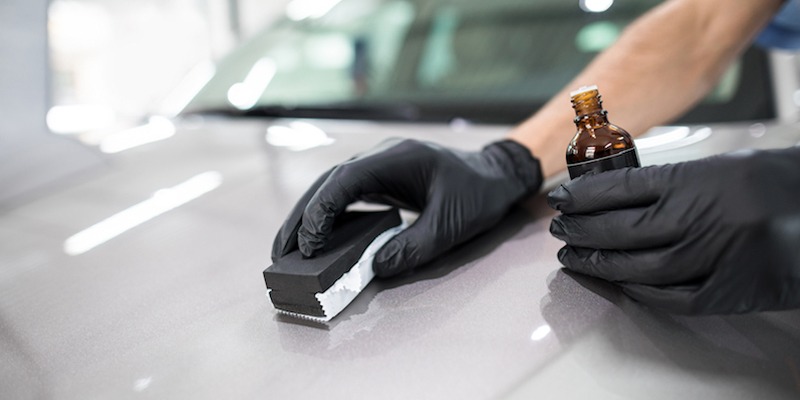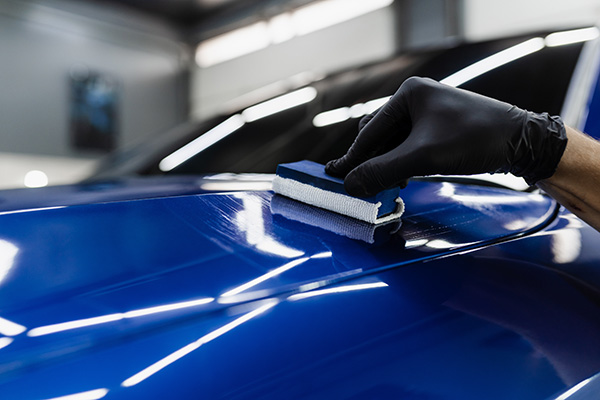The Duty of Ceramic Coating in Enhancing Your Cars and truck's Resale Value
The Duty of Ceramic Coating in Enhancing Your Cars and truck's Resale Value
Blog Article
The Importance of Ceramic Coating: Securing Your Cars and truck's Outside With Precision
In an age where preserving the visual and useful integrity of your car is vital, ceramic finishing becomes a crucial solution. This safety layer not only guards against environmental adversities however additionally elevates the aesthetic appeal of your automobile. With its unique bonding properties, ceramic finishing offers a level of protection that far goes beyond traditional waxing methods. Yet, just how specifically does it accomplish such impressive results? As we explore the nuances of its application and compare it to various other alternatives, one can not assist but question regarding the specifics that make this innovation important for contemporary car care.
Advantages of Ceramic Coating
When it comes to protecting a car's aesthetic allure, ceramic covering offers considerable benefits. By developing a semi-permanent bond with the vehicle's paint, ceramic layers effectively avoid oxidation and fading, ensuring that the cars and truck preserves a glossy, showroom-like finish for an extensive duration.
Along with its safety top qualities, ceramic layer provides exceptional hydrophobic residential or commercial properties, causing water and various other fluids to bead off effortlessly. This attribute simplifies the cleansing procedure, as dirt and debris are much less likely to follow the surface, decreasing the regularity and effort required for upkeep. Furthermore, the finishing's resistance to chemical discolorations from acidic contaminants like bird droppings and tree sap is one more noteworthy benefit, minimizing prospective paint damage.
Ceramic finishings also improve scratch resistance, offering a layer that can soak up minor abrasions and swirl marks. This characteristic is particularly helpful in preserving a beautiful surface, reducing the chance of visible flaws and maintaining the honesty of the automobile's paintwork in time.

Exactly How Ceramic Layer Works
Understanding the auto mechanics behind ceramic covering exposes its efficiency as a safety solution for vehicles. Ceramic coverings are essentially liquid polymer applications that chemically bond with an automobile's factory paint, creating a safety layer.
Application of ceramic finish entails a careful procedure. The automobile's surface have to be extensively cleaned up and decontaminated to guarantee optimum adhesion. Once used, the liquid polymer creates a semi-permanent bond with the paint, setting into a clear, resilient shield. This shield enhances the car's gloss and hydrophobic homes, facilitating much easier cleaning by triggering water and contaminants to bead and slide off easily.
In addition, the finish's molecular structure gives resistance to minor scrapes and chemical stains. Unlike waxes or sealants that sit on top of the paint, ceramic finishings integrate with the surface area, using resilient security. This assimilation is essential to its efficiency, making certain the vehicle's surface remains pristine for many years.
Comparing Ceramic Coating to Alternatives
In the world of automobile protection, ceramic finishing stands as a formidable alternative when contrasted to standard options such as waxes and sealants. While waxes you could try this out use a short-lived glossy surface, typically lasting just a couple of weeks to months, ceramic coverings provide a longer-lasting service, commonly withstanding for many years. This longevity is attributed to the chemical bonding that occurs when ceramic coatings are used, creating a strong layer that is resistant to ecological risks.
Contrastingly, sealants, although more resistant than waxes, still drop brief of the robust defense used by ceramic coatings. Sealers can usually last for up to a year, supplying an artificial shield versus certain aspects. They lack the superior hydrophobic buildings and UV protection that ceramic coatings provide.
Furthermore, ceramic finishings use enhanced scrape resistance, which neither waxes nor sealers can effectively original site match. In summary, while standard waxes and sealants offer basic protection, ceramic finishings present an extensive, lasting remedy that considerably maintains the lorry and improves's exterior surface.
Application Refine Discussed
Applying ceramic finish to a lorry calls for a precise process to ensure optimum results and sturdiness. The initial step includes thoroughly cleaning the automobile's surface to eliminate dust, grease, and previous waxes. This is crucial for making sure the coating sticks properly. A pH-neutral hair shampoo and a clay bar therapy are commonly utilized to attain a beautiful surface area. When cleaned up, the vehicle is dried and polished to get rid of any kind of imperfections, as any existing swirls or scratches can come to be more noticable after the coating is used.
Complying with surface preparation, the application of the ceramic covering begins. The layer is normally applied in a climate-controlled setting to avoid dirt fragments from working out on the newly cleaned surface area. Utilizing an applicator pad, the ceramic coating is applied in small sections to ensure even coverage. It is vital to adhere to the maker's guidelines concerning the appropriate curing time and application thickness.
After application, the finish calls for a details curing duration, during which the lorry must be safeguarded from water and contaminants. This healing process can differ depending on the item but typically varies from 24 to 48 hours. Ultimately, this comprehensive procedure is critical in achieving a resistant and glossy surface.
Maintenance Tips for Longevity
To keep the long life of a ceramic finishing, adherence to a self-displined upkeep routine is important. Normal washing is paramount; use a pH-neutral auto shampoo and soft microfiber gloves to avoid abrasions. Stay clear of automatic auto washes, as their extreme brushes can endanger the finishing's honesty. Rather, go with a hand wash to guarantee thorough yet gentle cleansing.
Post-wash, drying the automobile with a clean microfiber towel protects against water areas that may weaken the covering in time. Furthermore, apply a ceramic layer booster every couple of months. These boosters strengthen the hydrophobic properties and boost the coating's safety abilities, guaranteeing it stays efficient versus impurities.
Remember that vehicle parking areas play a crucial function in upkeep. ceramic coating. Whenever possible, park in shaded locations to decrease UV exposure, which can slowly compromise the finishing. For lasting storage, consider using a car cover for added protection against ecological elements
Conclusion
In final thought, ceramic coating offers as a crucial protective layer for automobile exteriors, providing resilient defense versus environmental elements such as uv, dirt, Homepage and crud rays. Understanding the application process and adhering to upkeep referrals are necessary for making best use of the durability and performance of ceramic finish.
When it comes to maintaining an automobile's aesthetic appeal, ceramic finishing supplies substantial advantages. By developing a semi-permanent bond with the car's paint, ceramic finishings effectively prevent oxidation and fading, making certain that the vehicle keeps a glossy, showroom-like surface for an extended duration. Ceramic finishings are essentially liquid polymer applications that chemically bond with a vehicle's factory paint, creating a safety layer. In summary, while typical waxes and sealants provide basic security, ceramic layers offer a comprehensive, long-lasting service that dramatically boosts and preserves the car's outside coating.

Report this page